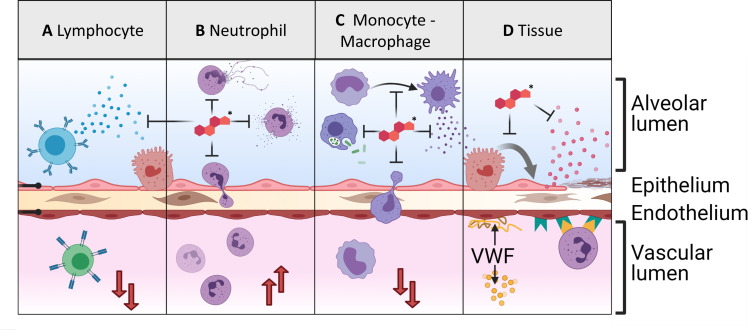Figure 2.
Glucocorticoid mechanism and cellular effects. (A) Glucocorticoids (GCs) inhibit lymphocytes’ production and release of inflammatory cytokines and reduce circulating lymphocyte counts by redirecting circulating lymphocytes to the lymphoid organs. (B) GCs inhibit inflammatory neutrophil behaviors such as degranulation, NETosis, and recruitment. They also increase circulating neutrophil counts by enhancing the maturation of neutrophils in the bone marrow. (C) GCs inhibit inflammatory macrophage and monocyte behaviors including the activation of monocytes into macrophages; the phagocytosis of bacteria; the release of cytokines by activated macrophages; and the recruitment of monocytes to inflamed areas. (D) GCs inhibit the transdifferentiation of alveolar type II pneumocytes into type I to cover damaged tissue. They also inhibit the release of proinflammatory cytokines. However, they also appear to increase the release of von Willebrand factor (VWF) and the expression of endothelial adhesion proteins (* marks the GC).

